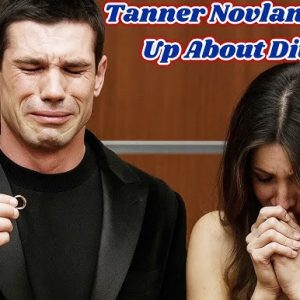The morning Eric Forrester called the executive meeting, the very air at Forrester Creations shifted. A palpable tension hung heavy, not the usual hum of creativity, but a silent dread. Designers exchanged nervous glances, assistants whispered, and executives paused outside the conference room, sensing something volatile, deeply personal, finally bubbling to the surface. When Eric stood at the head of the table, flanked by Ridge, Steffy, Thomas, Hope, Brooke, and Carter, his expression was resolute. He wasn’t merely the founder; he was the company’s backbone, its living legacy. And today, his patience had worn thin.
“If Ridge cannot clarify his future – with Brooke, with Taylor, or alone,” Eric’s voice cut through the room like a blade, “then I can no longer allow him to remain at the center of this company’s leadership. His indecision is infecting every part of this business.” A heavy silence descended. “Effective immediately, I’m appointing Steffy as acting CEO of Forrester Creations.” Gasps rippled through the room. Even Ridge, for once, was speechless, his mouth opening without a sound. Steffy, initially stunned, quickly composed herself, a subtle nod confirming her acceptance, already stepping into the role. Thomas leaned forward, a glint of ambition in his eyes, while Hope, seated beside him, watched Ridge, half-expecting an objection, a fight for control. But there was none. And that, Eric knew, was the root of the problem.
“This company is a dynasty, but it’s also a business,” Eric continued, his voice unwavering, “and we’ve let it become a stage for personal drama. That ends today. Steffy knows what this brand needs. And until Ridge can decide who he is outside of Brooke Logan or Taylor Hayes, he’ll be better off with fewer responsibilities.” The impact was immediate, a seismic shift. Within twenty-four hours, Steffy convened new department meetings. She began a swift, strategic, and assertive review of budgets, timelines, and team assignments. Among the first positions she targeted for reevaluation was that of creative director.
Thomas, by name, by birth, by sheer tenacity, believed the role was rightfully his. He had poured himself into collections, proving his worth repeatedly, overcoming past failures and scandals. He had earned it. Hope, however, held a different view. “I’ve co-led the most profitable brand in the company for the last five years,” she reminded Steffy privately. “Hope for the Future is Forrester’s progressive face. If anyone is going to lead creatively, it should be me.” But Steffy offered no promises, only a challenge: “Impress me. Convince me.” With those words, a silent, yet fierce, creative war ignited within the hallowed halls of Forrester Creations.
Thomas and Hope began to duel, not just for Steffy’s favor, but for the very soul of the company’s artistic direction. Thomas, fueled by Steffy’s belief in “Forrester blood,” leaned into tradition: architectural lines, bold silhouettes, his sketches echoing past eras of Forrester elegance, but with a harder, sharper, more masculine edge. His design language was legacy on steroids. Hope, in stark contrast, championed softness, innovation, and sustainability. She integrated modern fabrics, subtle gender-fluid tailoring, and youth culture influences. Her vision wasn’t just about fashion; it was about purpose, politics, platform. She didn’t just want to clothe models; she wanted to redefine identity on the runway.
Design rooms became divided camps. Interns whispered about rising factions. Models found themselves pulled between conflicting fittings. The sewing team, caught in the crossfire, began receiving two versions of the same garment. Carter was forced to intervene, a weary mediator in a logistical nightmare.
Meanwhile, Ridge spiraled. Watching his daughter ascend, watching Hope and Thomas battle for a crown that had always felt securely within his grasp, he felt the sharp sting of his own inaction. Brooke, too, maintained a strange distance. She hadn’t rushed back to his side, hadn’t reclaimed her seat. Instead, she observed the chaos from the sidelines, a knowing look in her eyes, as if this, too, had been part of her plan. And perhaps it was. For in letting go, Brooke had gained something Ridge hadn’t anticipated: clarity. She wasn’t lobbying Eric to reverse his decision. She wasn’t intervening in Hope’s campaign. She simply worked, attending board meetings, consulting with international partners, organizing brand partnerships—without drama, without Ridge. And it drove him mad.
Steffy, now in full command, tightened operations. She held a closed-door meeting with Thomas and Hope, delivering an ultimatum: “You have one week. One mini-collection. Three looks each. We’ll present them side by side. The board, myself, and key executives will vote on which vision will lead our next season.” The announcement struck the company like lightning. Thomas doubled down, isolating himself in his studio, working late nights, forbidding distractions. He pulled design assistant Zen into his orbit, maximizing every Forrester resource. Hope, conversely, brought in external collaborators: young viral designers from Europe, digital-first creators, sustainability experts. She didn’t just want to win; she wanted to disrupt.
As the presentation day neared, tensions cracked. Thomas accused Hope of using “politics to disguise mediocrity.” Hope shot back, “You’re still designing for a fantasy that only exists in your head. Fashion is real now. It has to mean something.” Ridge, attempting to mediate, stepped into the design room, offering advice, perspective. But neither of them listened. The ground had shifted. His voice no longer held the same authority. Steffy, watching from her new office, realized the profound truth of her grandfather’s decision. Leadership required decisiveness, not sentiment.
The presentation arrived. Held in the main Forrester showroom, with key investors, media partners, and senior board members in attendance, it was more than a creative pitch; it was a referendum on the company’s future. The lights dimmed, the music swelled. Thomas’s collection came first: dramatic, sculpted, architectural, stark black and white with flashes of red. It was powerful, almost intimidating, receiving polite applause, predictable admiration. Then came Hope’s: light, airy, fluid. Models of all shapes and genders walked the runway. The collection danced. The message was clear: inclusion, possibility, evolution. The applause was louder. Younger executives nodded. Social media reps livestreamed.





